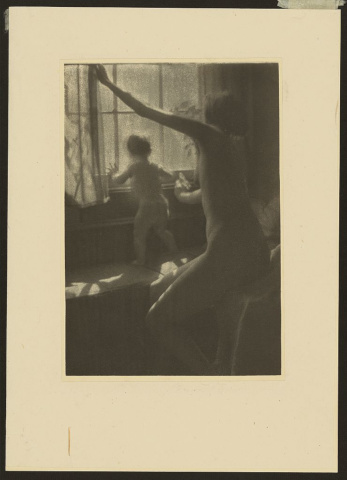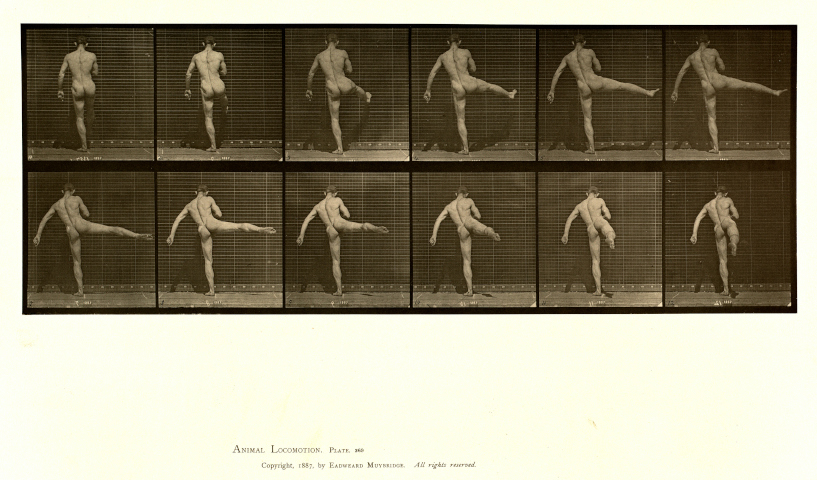Nude Photography: 1850-1980
edited by Constance Sullivan and published in 1980 by Harper & Row
The dust jacket of Nude Photography: 1850-1980 says it is the "first book to seriously explore the tradition of the nude in photography; to place that tradition in a cultural-sociological context". The book includes a short preface by Constance Sullivan, 134 images of nudes, male and female, and two essays, "Addressing the Erotic: Reflections on the Nude Photograph" by Robert Sobieszek, erstwhile associate curator of nineteenth-century photography at the International Museum of Photography at George Eastman House, and "Nude in a Social Landscape" by Ben Maddow.
Photographers represented include, among others, Nadar, Thomas Eakins, Alfred Stieglitz, Atget, Edward Steichen, Imogen Cunningham, Dorethea Lange, Edwart Weston, Minor White, Man Ray, Paul Outerbridge Jr., André Kertész, Harry Callahan, Walter Chappell, Emmet Gowin, Robert Heinecken, and Sheila Metzner.

For a first stab at seriously exploring nude photography, it is a success. The images span a range of eras and styles from the beginning of photography to the 1970s, including artists' studies, soft Pictorialist fantasies, and frank and graphic nudes. All are well-reproduced in large format. There are a number of images in this book of nude children and adolescents that can be disconcerting to the modern eye. On the other hand, a good number of images that would most likely have titillated or shocked contemporary society now seem quaint.
However, the increasing availability of a much wider range of photography means that more, and more interesting, photographs have been used in subsequent treatments of nude photography, notably in William A. Ewing's books The Body and Love and Desire. The included essays are thought provoking, but I can't speak well to theory, so I'll just describe some of the main themes and concepts I gleaned from them.
"Addressing the Erotic" provides an analysis of the nude image being "both of an erotic subject, the nude, and an erotically functional object, the photographic image ... a pictorial product of the erotic imagination and an agent provoking an erotic response." Mr Sobieszek goes on to discuss the differences between erotic photography and pornography.
All pornography is erotic photography, but not all erotic photography is pornography. The contents of pornography are traditionless, they don't change much through time (see the frank dageurreotypes of intercourse that emerged almost immediately upon the invention of photography), while erotic photography changes with "available norms and permissions, either personal or social" and depends upon "a specific literary origin and a psychological heritage of erotic recollection" that reaches back into the pre-photographic art world. The rest of the essay discusses the history of erotic imagery, the nature and interpretation of the concept of the erotic, and the various uses, objective and subjective to which nude photography was put.

Ben Maddow's essay sets the nude photograph into a literary and artistic context. He says "the real world... is inextricably embedded in every photograph ever taken. This is particularly true of the nude; such photographs carry with them the elaborate furniture of the time, the morals, the conceptions and misconceptions, not only of the society where a photograph was made -- but of the society ... where it is now seen." Furthermore "the photograph contains, as no graphic work done by a finite hand can ever match, an inexhaustible connection to reality: in its infinity of detail, in its infinitesimal gradation of light into dark and back again".
He speaks of the desire to capture in writing, painting, and later, photography, the specificity of detail we see in the world, to capture the fleeting moment and preserve it through time. "But there are two more ways to describe the body: one is to laud nakedness as ideal; the other to despise it as the landscape of evil." The first is illustrated by calls back to the ideal life of man living uncorrupted in nature (Adam and Eve in Eden, the myth of the noble savage) and the innocence of childhood, while the second is based on the fallacious Pauline view of the lesser nature of women, and conflates the nude with the shame of sex. Our clothing hides our nudity to the point that even we rarely see ourselves or live our lives nude, even in our own homes.
In Europe erotic photography proliferated almost immediately upon the advent of photography, whereas in the Americas a rigid Puritanism ensured that the nude photograph was far more rare. This difference in attitude can still be seen in approaches to nudity in advertising and films in different regions of the world. The rest of the essay concerns the changing attitudes and styles of erotic photography through the early- to mid-twentiety century.
Recommendation: Worth a read if you find a copy, but don't go out of your way.
Reviewed 2024-02-18